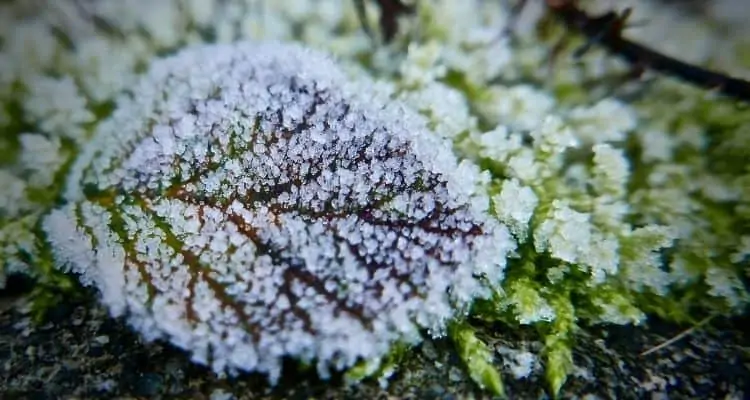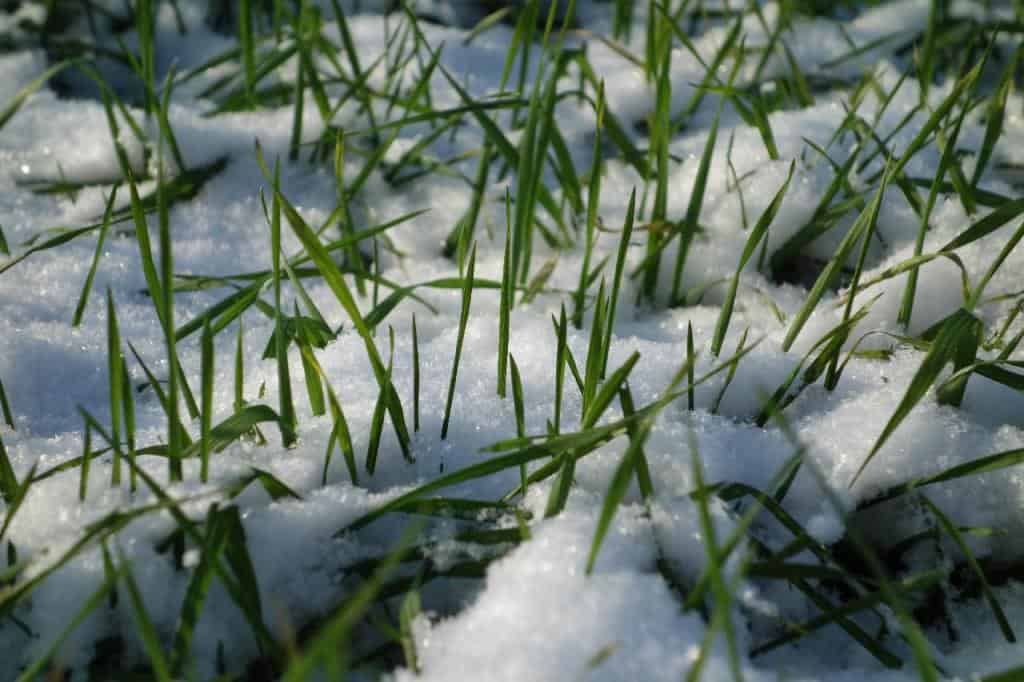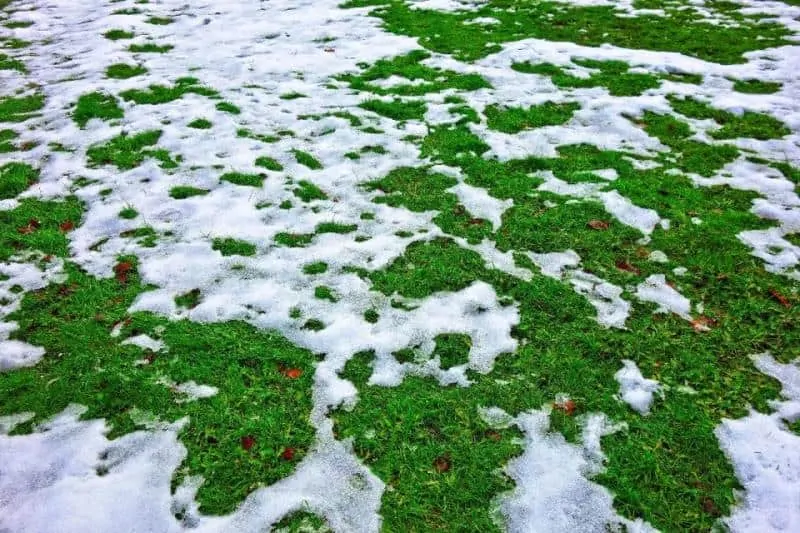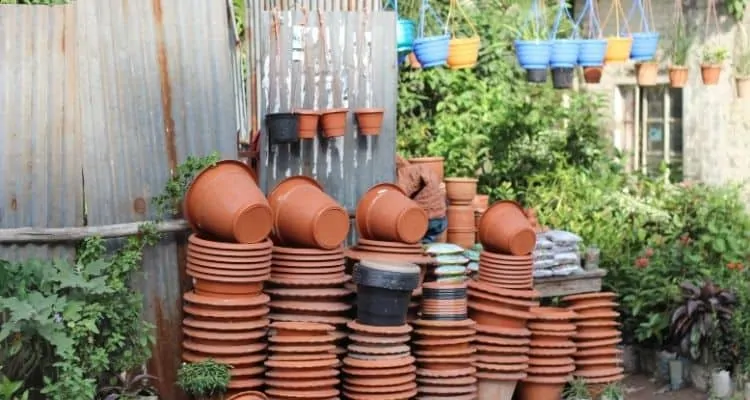How to Overwinter Perennial Plants? Winter can be hard for both plants and your garden. The frost won’t let the annuals sustain. Though you can save your Perennials from cold. You probably need to overwinter the perennials. It’s something that every gardener must know and adapt. You can save your plants this winter by Overwintering them. Just use anything that can keep the plants warm and cozy this fall. Sometimes just mulching would be enough. While in other situations you have to choose some techniques to cope with the frost. You can move the Plants in containers Inside shade or non-heated garage.

Check out my previous post: Garden Works to do in Winter? Lawn Winter Care.
What does Overwintering Perennials mean?
Surviving winter frost by any means is overwintering. Overwintering simply means saving plants from harsh winters conditions. It is a series of organized gardening jobs that eventually help the plants to survive the cold weather.
Theoretically, you can overwinter any plant. But there is a basic problem with this approach. Most annuals don’t yield again in the subsequent year. And they are not so easy to save from frost. Even if you save them and can get some yield, It would not yield quality products.
Moreover saving a perennial is far easier than any annual. They have a natural tendency of Surviving temperature change. Most perennials can survive cold in their native hardiness zones.
So the basic idea of Overwintering is the survival and maintaining the yield of plants. It is not beneficial to spend all your effort and resources on plants that won’t survive. Also, you should consider using every technique to protect your lovely perennials from winter nights.
Therefore, we usually relate overwintering with perennial plants. Especially those plants that actually need to be saved.

What type of plants can Overwinter?
All plants hardy to their zones can overwinter. Strong trees, hardy bushes, shrubs, and of course some herbs can survive the cold. Almost every perennial plant can overwinter. It only requires proper temperature and sufficient moisture to sustain cold winter.
It is a misconception that overwintering means keeping plants in the same shape throughout winter. In fact, overwintering plants can dry out, get some damage, even break. Still surviving the cold and growing back in spring is overwintering.
You can try overwintering your annuals although it’s not very efficient. Most of them usually won’t sustain mild frost. Also, they don’t yield for subsequent seasons even if you save them.
Therefore, overwintering is suitable for plants that are either pretty costly or just hardy to their Agricultural hardiness zones. It can be your favorite apple tree or any lime, lemon, or maybe rosemary bush. You should better overwinter plants that you will need early in spring.
Also read: How to Save Money while Gardening?
How do you overwinter perennials?
My perennials are my friends. I’ll try everything to protect them from cold winter nights. If you think the same then you are at the right place. With my experience, I can easily say that there are only three things you can do to save your plants in the fall. These methods are effective for both container and garden plants.
- Moving plants inside. I know moving is not an option for the big trees and large containers but you can try shifting if the plant is in a small container. It is really effective to avoid freezing winds away from the garden. The place should be unheated and well aerated. Winter is the dormant time for plants so low lighting will not harm them.
- Covering the plants with thermal wrap. If you can’t move the plants inside then covering is the only option left for you. It is really effective to protect delicate plants in large containers. You can use burlap, fleece, or any thermal blanket type material especially to cover container plants. Even the trunk of trees can be wrapped with plastic wrap but do this with caution. Unnecessary wrapping or early wrapping with plastic can cause damage to the plant.
- Mulching heavily with organic matter. Organic mulch is the best way to keep plant roots protected from the snow. Mulching is useful for both container and garden plants. Although there are plenty of options available to choose yet you should consider using only organic mulch. Materials like straw, dry leaves, and pieces of barks are the best option to keep the roots warm. You should mulch only when topsoil becomes solid with cold. Early mulching can attract rodents and pests. They can hibernate within and harm your garden in the spring.
There are a few other techniques of overwintering your perennials. They are effective but a little complicated. So I have decided to discuss them later in the article. Keep reading if you are interested to know more.

Check out: Can Plants Drown? How to Save a Drowning Plant?
Can you Overwinter Container Plants?
Yes, definitely we can overwinter container plants. Although plants in containers are in greater danger than garden plants. Here the small quantity of the soil is a disadvantage for container plants. On the other hand, plants in your garden are at an advantage due to the sear volume of garden soil. The soil is sufficient to resist thermal loss throughout winter.
But don’t worry. Even container plants can overwinter. It only requires proper knowledge about the particular plant. To survive the cold, you can either grow a hardy perennial in the container or simply try to save whatever you have right now.
Can Perennials be kept in pots over winter?
Perennials can be kept in pots over winter. In fact, Some gardeners dig up the perennials from the garden and grow them in containers just to overwinter them indoors.
This is an effective technique yet not so easy. You will require patience and proper understanding to shift the plant out of the ground. The timing is essential. Shifting of this type should be done in the last phase of the annual growing season. Act before your plant gets completely dormant. Otherwise, the shifting will damage the active root growth.

Do you know- Can Grass Survive Snow? Winter Lawn Care
Overwintering Perennial Plants in Pots
Perennial plants in pots and containers are in more danger during the winter season. These plants don’t have enough soil for protection. They have a smaller rootball. So It is better to make your plans for overwintering plants before the growing season ends. You can start with the following choices.
Choose the Right Container for Winter
Containers are an essential part of Container gardening. Obviously, the whole concept of this gardening technique is based on containers. And yes there are literally 100s of containers to choose from for your plants.
But do all of them good for winter conditions? Nope only a few of them do good to the plants in winter conditions.
Usually clay, terracotta, and porcelain are the ideal choices for containers. These materials are light and effective for plant growth yet they are not durable enough to sustain the harsh winter condition. Prolong freezing and thawing will crack these containers. So they are not good for winter gardening.
This leaves us with metal or plastic containers. Are they good? Maybe, you can think of metal containers. They are strong, sturdy, and durable. They can be used in any weather condition but they are conductors of heat and can quickly freeze the soil within. So It is better to avoid metal containers for the spring season.
Now we only have plastic or composite containers to choose from. And yes they are durable, nonconducting, and flexible. They can easily withstand frequent freezing and thawing throughout winter. They will keep the heat inside and help the root to warm up quickly in the spring season.
Therefore, In my opinion, you must choose a plastic or composite container to overwinter plants.
Check out this for details: What is the difference between Terracotta and Clay pots?
Choose the Best Perennial for Overwintering
This is something that you must decide before winter. The type of plant you grow in the container will definitely determine whether you would be successful or not in Overwintering them. As we have already discussed, You should select the perennials to overwinter. Annuals are not meant for overwintering. You have to save plants that meant more with cost and feel.
Before that why not choose a hardy plant as you know it will require overwintering. I think for containers choose plants that are at least 2 zone hardy than your locality. Winter for container plants is deadly. If the plant is hardy in your locality then it can survive cold in the garden. Probably with other plants they will do great. But in containers, they will face twice the cold and freezing effect than garden plants. So I can assure you that the Two-zone hardy plant can only survive in the container in your locality.
Therefore If you live in USDA hardiness zone 5 then grow zone 3 plants in containers. Sometimes zone 4 plants can also survive but it will be a 50-50 change. These plants are costly and you better not waste money on chances, instead, choose wisely and make sure they survive the worst situations.
Read more about: How to prepare your garden for cold Winter?
How to Overwinter perennial plants in a container?
Start with shifting small containers inside a greenhouse or unheated garage. The location must not be too warm to wake up the plants from dormancy. Early growth in this situation will drain all the reserve resources in the plant. Eventually, the plant may die. Therefore, maintain the cold temperature within the hardiness limits of the plant. The whole concept of overwintering is to keep the plant safe from cold without waking it up from dormancy.
You can group the small container in a closed area. They should receive partial sunlight and proper air throughout winter. Multiple containers together can provide a thermal shield to each other. This technique is helpful even for large outdoor containers in USDA zone 7 or above.
If the container can’t be moved then use a cover to support the plant. You can wrap the large container with bubble wrap or thermal sheets. Sometimes burlap or fleece cloth can also help to preserve heat within the soil. Mulching is not very effective for outdoor containers. They are exposed to harsh conditions from all sides. So only proper cover can save them from frostbite.
Sometimes burying the small containers in empty garden space is the only option. This technique works only for small containers. You have to dig holes bigger than these containers. It should fit the container within completely. Lay the container in the center and cover it with 2 to 3 inches of mulch. Together with the soil and mulch keep the roots warm and safe. this is an effective yet very effort demanding technique. Make sure the container remains intact so that moving the plants out in spring would be easy.
Overwintering garden Perennials
Big perennial trees and shrubs in the garden are literally on their own to survive the snow. You can simply try to help them, success is not guaranteed. Everything mostly depends on the agility and the hardiness of the plant you have in your garden.
Trees like apple and conifers are tolerant to harsh cold conditions. They probably won’t die. Although winter can damage their branches. It is inevitable, you can’t avoid that completely.
Small shrubs and perennials should be mulched heavily to avoid contact with the snow. You can completely cover some plants with mulch and still, they will survive. While others need some open air. So look out for plants specifics before proceeding.
The first thing to do is pruning. It must be the final pruning of the year. Remove the dead branches and decaying foliages. Remove decaying matter away from the main stem or trunks. It can attract lots of pests and rodents during winter.
Water once to hydrate the roots and slow it down to just once a month or twice if really required. Don feed the plant during this time. This will force the plant to remain dormant throughout winter. Dormant plants and trees are easy to overwinter.
Leave the soil around the trunks to dry and become solid after a couple of deadly frosts. Then layer 2 to 3 inches of dry leaves, straw, and cocopeat to mulch the root ball. The cold nights will not allow these materials to decompose quickly. Instead, it will act as a protective thermal covering for the roots. You just have to wait and pray for the best after all these efforts.
Just make sure the plants won’t dehydrate or wake up early from dormancy. This is all you need to do to overwinter perennial plants.



